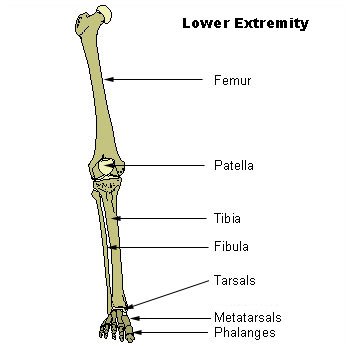Knee
In humans the knee refers to the joints between the femur, tibia and patella. In quadrupeds, particularly horses and ungulates the term is commonly used to refer to the carpus, probably because of its similar hinge or ginglymus action. The joints between the femur, tibia and patella are known as the stifle in quadrupeds. In insects and other animals the term knee is used widely to refer to any ginglymus joint.
a comparison beteween bony anatomy of the human pelvic gridle and leg with that of our closest living realtives, the african apes,reveals profound evolutionary changes related to the acquisition of bipedality more than 4 million years.




